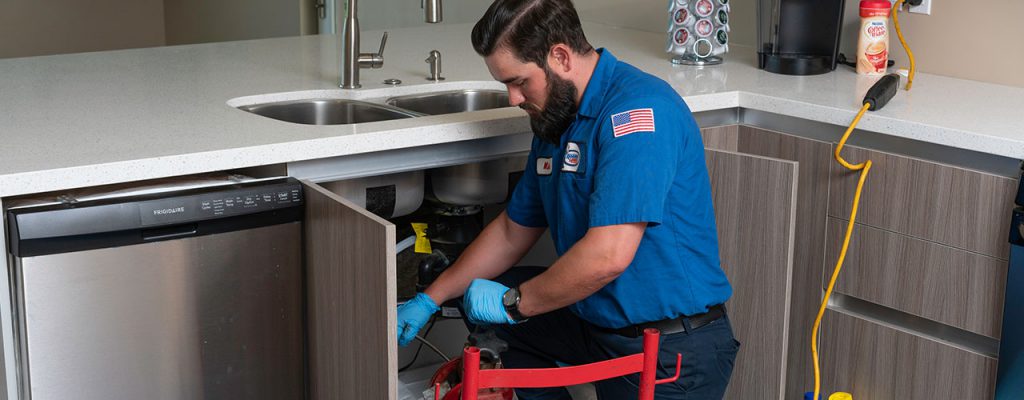Dealing with Plumbing Issues in Older Homes: A Practical Guide
Dealing with Plumbing Issues in Older Homes: A Practical Guide
Blog Article
The content down below involving Common Plumbing Problems in Older Homes is really compelling. Try it and make your own conclusions.

Older homes commonly come with beauty, personality, and history, yet they can likewise bring a host of pipes issues. Whether you're managing maturing pipelines, low tide pressure, or leakages, understanding just how to address these common troubles is important to preserving a risk-free and useful home. In this overview, we'll discover the regular pipes difficulties faced by older homes and supply practical options to keep your plumbing in leading shape.
Recognizing Common Pipes Concerns
Aging Pipes
Among the most common issues in older homes is aging pipelines. Depending on the age in which your home was constructed, the pipes may be made from materials that have degraded over time, such as galvanized steel, cast iron, and even lead. These products can wear away, become weak, or develop leaks, bring about water damage and potential health hazards.
Low Tide Pressure
If you're experiencing low water stress, maybe due to mineral deposits, rust inside the pipelines, or old fixtures that are no longer working successfully. This can be a major hassle, particularly in locations like showers and sinks.
Leaking Pipelines
Leakages are an additional constant concern in older homes, usually caused by rusty or damaged pipes. Even small leakages can cause considerable water damages, mold and mildew development, and raised water costs otherwise attended to immediately.
Outdated Fixtures
Obsolete pipes components such as faucets, toilets, and showerheads not only look old however may likewise be less reliable, vulnerable to leakages, or incompatible with modern-day pipes requirements.
Pipe Corrosion
Corrosion is an usual trouble in older pipes, specifically those made from galvanized steel or cast iron. Corroded pipelines can limit water circulation, trigger discoloration, and eventually bring about leakages or pipe bursts.
Evaluating the Condition of Your Pipes
Checking Noticeable Pipes
Start by inspecting any kind of noticeable pipelines in your house, such as those in cellars, crawl spaces, or under sinks. Search for signs of corrosion, leakages, or corrosion, which can show underlying problems.
Checking for Leaks
Look for leakages by examining areas around faucets, commodes, and under sinks. You can likewise monitor your water meter before and after a duration of no water utilize to discover concealed leaks.
Water Top Quality Screening
Older pipes can affect the top quality of your water. Conduct a water high quality test to check for impurities such as lead, corrosion, or other contaminations that may be presented by aging pipes.
Solutions for Usual Plumbing Concerns
Replacing Aging Pipelines
If your home has old, weakening pipelines, consider changing them with modern-day materials like copper or PEX. This can be a substantial investment, yet it will stop future issues and enhance the safety and security and dependability of your pipes system.
Taking Care Of Low Water Pressure
To take care of low tide pressure, begin by cleansing or replacing old fixtures and eliminating mineral build-up in the pipes. If the issue lingers, it may be needed to change areas of corroded pipes.
Fixing and Changing Leaking Pipes
For little leakages, you can make use of pipe clamps or epoxy putty as a short-term solution. However, it's ideal to change leaking pipes completely to prevent more damages.
Upgrading Components
Updating old components to modern-day, water-efficient models can enhance your home's pipes efficiency and reduce water consumption. Search for fixtures with the WaterSense label for the very best performance.
Managing Pipeline Deterioration
If your pipes are rusted, changing them with corrosion-resistant materials like copper, PVC, or PEX is the very best service. Normal examinations and water quality upkeep can aid avoid even more deterioration.
When to Call an Expert
While some plumbing issues can be managed with do it yourself solutions, there are times when it's best to employ an expert. If you're taking care of major leaks, considerable rust, or are unclear about the condition of your pipelines, a certified plumbing professional can offer skilled assessment and repair service.
Preventive Upkeep Tips
Routine Inspections
Consistently inspect your plumbing system for indications of deterioration. Capturing problems early can prevent costly repairs down the line.
Water Stress Law
Guarantee your water stress is within the suggested array to stay clear of emphasizing your pipelines and components. A plumbing professional can mount a stress regulatory authority if needed.
Water High Quality Upkeep
Install water filters or conditioners if your water high quality is poor. This can secure your pipes and components from damages caused by hard water or pollutants.
Positive Pipe Substitute
If your home has very old pipelines, think about positive replacement prior to major concerns occur. This can save you from emergency situation repair services and water damage.
Verdict
Taking care of plumbing concerns in older homes calls for a mix of watchfulness, preventative upkeep, and timely upgrades. By recognizing the typical obstacles and understanding when to seek specialist assistance, you can ensure your plumbing system continues to be useful and trusted for many years to find.
Common Plumbing Issues in Older Homes and How to Fix Them
Owning an older home in Australia comes with its unique charm and a set of challenges, especially when it comes to plumbing. The Sunshine Coast has many older properties that can harbour plumbing problems that aren t just inconvenient but potentially costly. Here s a look at some common plumbing issues in older homes and expert advice on how to handle them.
Outdated Piping Materials
Many older homes were built with galvanised steel, cast iron, or even lead pipes, materials that are far from ideal by today s standards. Galvanised pipes are prone to corrosion and clogging, while lead pipes pose serious health risks.
How to Fix:
Replacing old pipes is a job for a professional. Upgrading to copper or PVC piping not only enhances water quality and flow but also increases the property s safety and value. If you suspect your home has outdated materials, a licensed plumber can conduct a thorough inspection and recommend the best course of action.
Corrosion and Pipe Degradation
Over time, exposure to water and minerals can cause pipes to corrode, leading to leaks, bursts, and water contamination. Corrosion is especially common in homes over 50 years old.
How to Fix:
Regular inspections can catch early signs of corrosion. If corrosion is found, the affected section of piping often needs to be replaced. For homes with extensive corrosion, a complete plumbing overhaul might be necessary. It s crucial to consult with a plumbing expert to understand the extent of the issue.
Tree Root Intrusion
Older neighbourhoods usually have mature trees whose roots can intrude into pipe lines, causing blockages or damage. This is particularly problematic for sewer lines, where roots seek out water sources.
How to Fix:
A plumber can use a specialised camera to inspect sewer lines for root intrusion. If roots are a problem, methods like root cutting or hydro-jetting can clear the obstruction. In severe cases, part of the pipe may need replacing. Consider root barriers around the piping to prevent future issues.
Inadequate Water Pressure
Low water pressure in older homes can be due to various factors, including corroded water lines, sediment build-up in pipes, or outdated fixtures.
How to Fix:
First, check if the low pressure is isolated to one area or throughout the house. Replacing old fixtures can sometimes resolve the issue. However, if the problem is more widespread, it might be due to sediment or corrosion. Flushing the system or replacing the affected pipes usually restores normal pressure. Again, a professional assessment is advisable.
Outdated Fixtures
Older homes often feature fixtures that are not only visually dated but functionally inefficient. This includes everything from toilets and taps to showerheads and washing machine hoses.
How to Fix:
Updating these fixtures can improve both water efficiency and the aesthetic appeal of your home. Modern fixtures are designed to conserve water, which can significantly reduce your water bill and lessen your environmental impact.
Conclusion
Maintaining the plumbing in an older home requires a proactive approach. Regular checks and updates are key to preserving these beautiful properties. If you re facing plumbing issues in your older home, it s best to call on experienced professionals like Green & Gold Plumbing & Gas. With the right expertise, even the most daunting plumbing problems can be resolved, ensuring that your home s character is maintained while its functionality is enhanced.
https://gandgplumbing.com.au/common-plumbing-issues-in-older-homes-and-how-to-fix-them/

We hope you enjoyed reading our article about Plumbing Issues in Older Properties and How to Fix Them. Thank you so much for spending some time to read through our post. Sharing is good. You won't know, you might be helping someone out. Thanks a lot for your time invested reading it.
Request Estimate Report this page